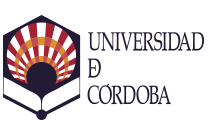Mostrar el registro sencillo del ítem
Acoso e inconvivencia escolar: el rol de la participación familiar en los centros educativos
| dc.contributor.author | López Hernáez, Lara | |
| dc.contributor.author | Ramírez García, Antonia | |
| dc.date.accessioned | 2020-03-24T13:30:31Z | |
| dc.date.available | 2020-03-24T13:30:31Z | |
| dc.date.issued | 2020 | |
| dc.identifier.uri | http://hdl.handle.net/10396/19829 | |
| dc.description.abstract | Varios estudios muestran una relación entre violencia dentro de los centros y una escasa participación de los padres en la misma. La metodología se basa en la administración de un cuestionario con 348 alumnos de Educación Secundaria -La Rioja, España -, entrevistas a 30 profesores y cuatro grupos de discusión - padres y alumnado -. Se ha recogido información sobre la implicación de los padres en los centros y el posible acoso escolar sufrido, para conocer si existe relación entre ambos. Los resultados muestran que la participación de las familias en los centros educativos riojanos es alta, y el porcentaje de acoso escolar relativamente bajo, menor entre chicas, que tienen también más clara la implicación de las familias en los centros y los beneficios que conlleva. No hay asociación entre esta alta participación y la reducción de casos de acoso, pero sí con la mejora de la convivencia. Como conclusión general se propone crear nuevos programas educativos que fortalezcan relaciones entre padres -escuela y les formen en relación a la educación de sus hijos, más concretamente con chicos. | es_ES |
| dc.description.abstract | Several studies show a relationship between violence within schools and low parental involvement on its. The methodology is based on the administration of a questionnaire with 348 students from Secondary Education - La Rioja, Spain - interviews with 30 teachers and four discussion groups - parents and students. Information has been collected on the involvement of parent s in schools and possible bullying at school, in order to know if there is a relationship between them. The results show that the participation of the families in the schools of La Rioja is high, and the percentage of school bullying relatively low, lower among girls, which also have a clearer implication of the families in the centers and the benefits that it entails. There is no association between this high participation and the reduction of cases of bullying, but with the improvement of coexistence. As a general conclusion, it is proposed to create new educational programs that strengthen parent -school relationships and train them in relation to the education of their children, more specifically with boys. | es_ES |
| dc.format.mimetype | application/pdf | es_ES |
| dc.language.iso | spa | es_ES |
| dc.publisher | Universidad de Extremadura. Facultad de Educación | es_ES |
| dc.rights | https://creativecommons.org/licenses/by-nc-nd/4.0/ | es_ES |
| dc.source | Campo Abierto. Revista De Educación, 39(1), 55-77 (2020) | es_ES |
| dc.subject | Acoso escolar | es_ES |
| dc.subject | Inconvivencia | es_ES |
| dc.subject | Comportamiento | es_ES |
| dc.subject | Comunidad educativa | es_ES |
| dc.subject | Familia | es_ES |
| dc.subject | Bullying | es_ES |
| dc.subject | Not coexistence | es_ES |
| dc.subject | Behavior | es_ES |
| dc.subject | Educational community | es_ES |
| dc.subject | Family | es_ES |
| dc.title | Acoso e inconvivencia escolar: el rol de la participación familiar en los centros educativos | es_ES |
| dc.title.alternative | Bullying and not school coexistence: the role of family involvement in the schools | es_ES |
| dc.type | info:eu-repo/semantics/article | es_ES |
| dc.relation.publisherversion | http://dx.doi.org/10.17398/0213- 9529.3 9.1.55 | es_ES |
| dc.rights.accessRights | info:eu-repo/semantics/openAccess | es_ES |

